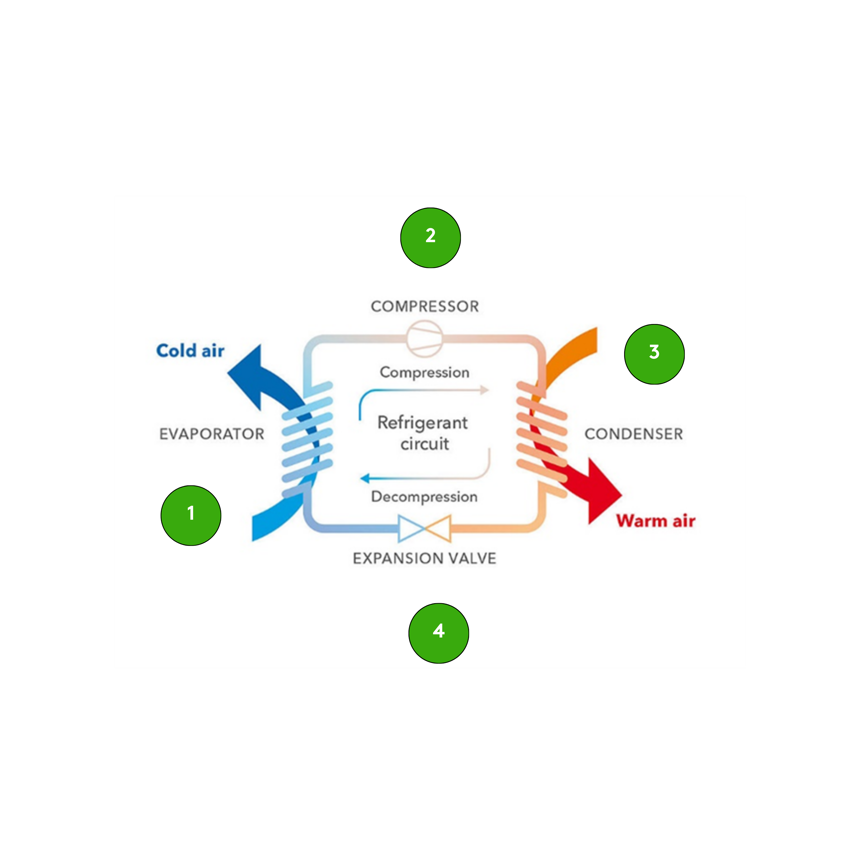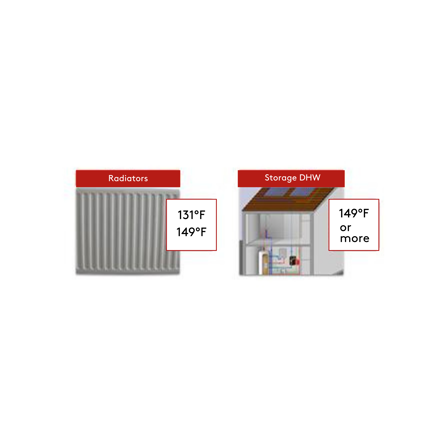How heat pumps work
In Nature, heat energy always moves naturally from hotter to colder areas (that’s the Thermodynamic principle).
Whereas heat pumps work transferring heat from a colder area (source) to a warmer area, by using electrical energy and exploiting the physical characteristics of refrigerant fluids.
A refrigerant fluid, by changing its status (from liquid to gas and vice-versa), absorbs or releases energy. Heat pumps technology exploits this physical feature by manipulating the refrigerant pressure though four main devices components:
- In the evaporator the refrigerant in liquid form evaporates, absorbing heat from the source (for example from the external air).
- The compressor increases the refrigerant pressure
- In the condenser the refrigerant in the form of gas liquefies releasing heat to the user (for example the fan-coil hydraulic circuit)
- The refrigerant is led through an expansion valve, which lowers the pressure, allowing the refrigerant to be looped again to the evaporator.
Then, in winter season you can remove heat from a cold external source, and transfer it to the indoor heating system, in summer, by reversing the unit, you can absorb heat from the building and rejecting it outside. That’s the typical functioning of Swegon reversible chillers & heat pumps.

Different applications need different solutions

Low and medium level heat – our tip:
- Reversible chillers which can optimize both TCO and CAPEX providing a solution which can make cooling in summer and heating in winter.
- Multifunctional units for those cases which need cooling and heating at the same time.

High level heat – our tip:
- Heat pumps optimize to make heating with even the right technology inside (compressors with liquid injection, refrigerants with low density etc).

Highest level heat – our tip:
- Dedicated solutions